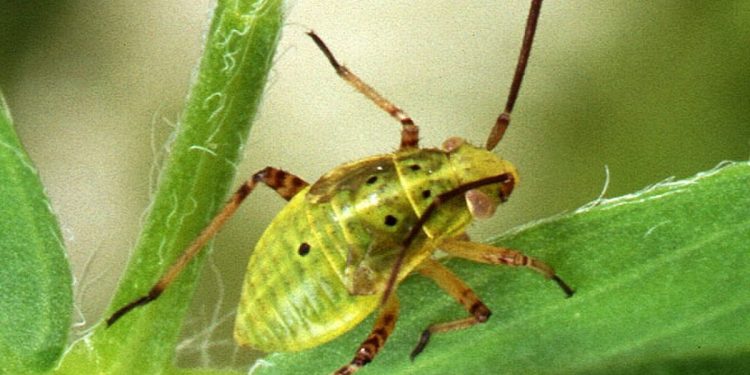#TarnishedPlantBug #IntegratedPestManagement #CropMonitoring #InsectControl #IPM #CropManagement #PestManagement #LygusSpp #Agriculture
Lygus spp., commonly known as the tarnished plant bug, is a significant pest of various crops worldwide, including cotton, strawberries, and alfalfa. These bugs feed on young plant tissues, causing distorted growth, reduced yields, and poor quality produce. In this article, we will discuss strategies to manage Lygus spp. infestations.
One of the most effective methods of controlling Lygus spp. is through integrated pest management (IPM). IPM involves using a combination of techniques, including cultural, biological, and chemical control methods. Cultural methods include crop rotation, removing crop residues, and planting pest-resistant crops. Biological control methods involve introducing natural enemies, such as parasitic wasps, to attack Lygus spp. Chemical control methods, such as insecticides, should be used judiciously and only as a last resort.
Another strategy to manage Lygus spp. infestations is to monitor crops regularly. Early detection of Lygus spp. infestations allows growers to take action before the pest population becomes too large. Monitoring can be done using visual inspections or by using pheromone traps.
The consequences of not managing Lygus spp. infestations can be severe. These bugs not only cause economic losses for farmers but also affect the quality and safety of the produce. For example, Lygus spp. feeding on strawberries can cause them to become misshapen, reducing their market value.
In conclusion, managing Lygus spp. infestations requires a combination of strategies, including cultural, biological, and chemical control methods. Regular monitoring of crops is also essential for early detection and effective control. By implementing these strategies, farmers can minimize the economic losses and quality issues caused by Lygus spp. infestations.







